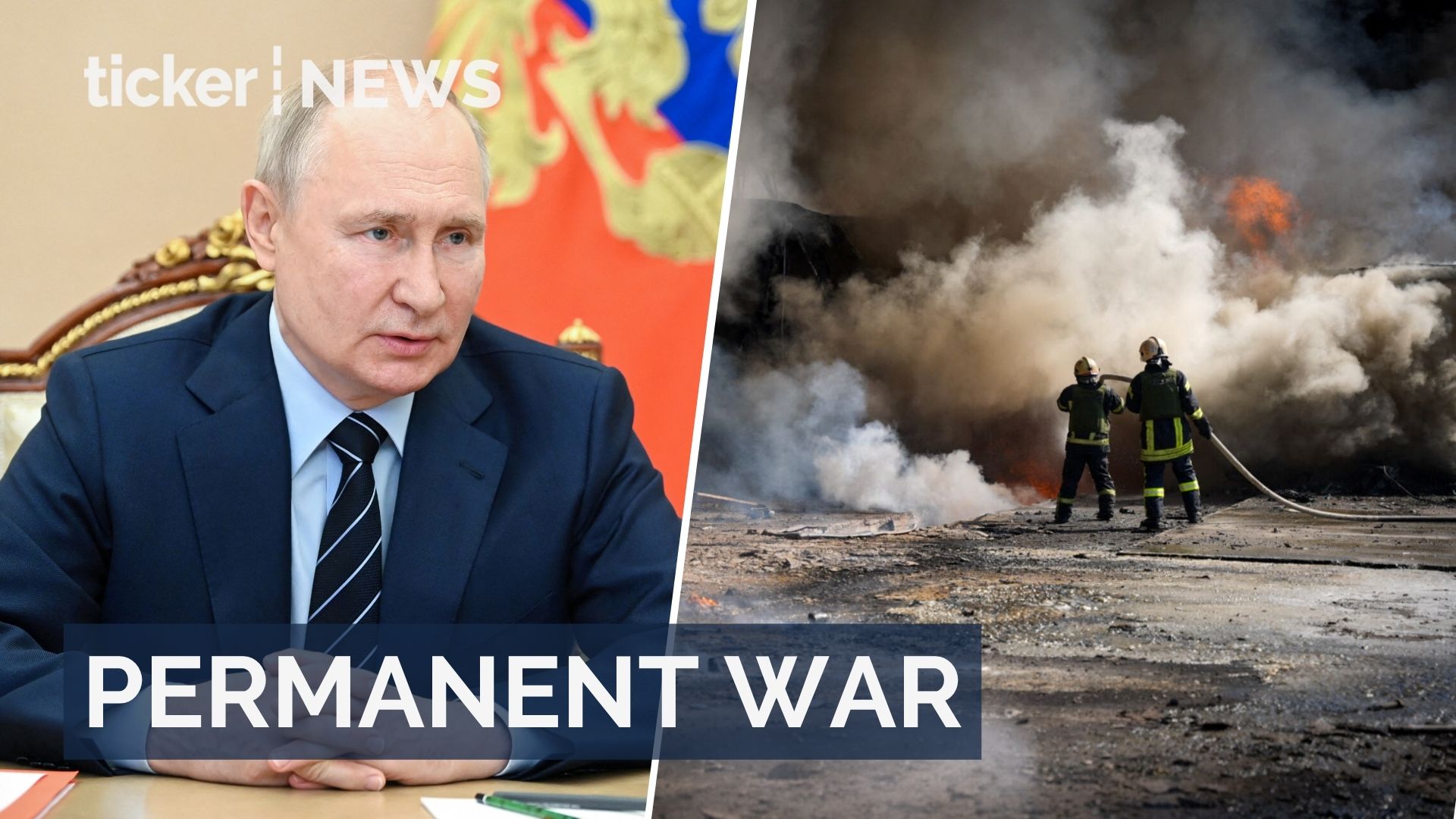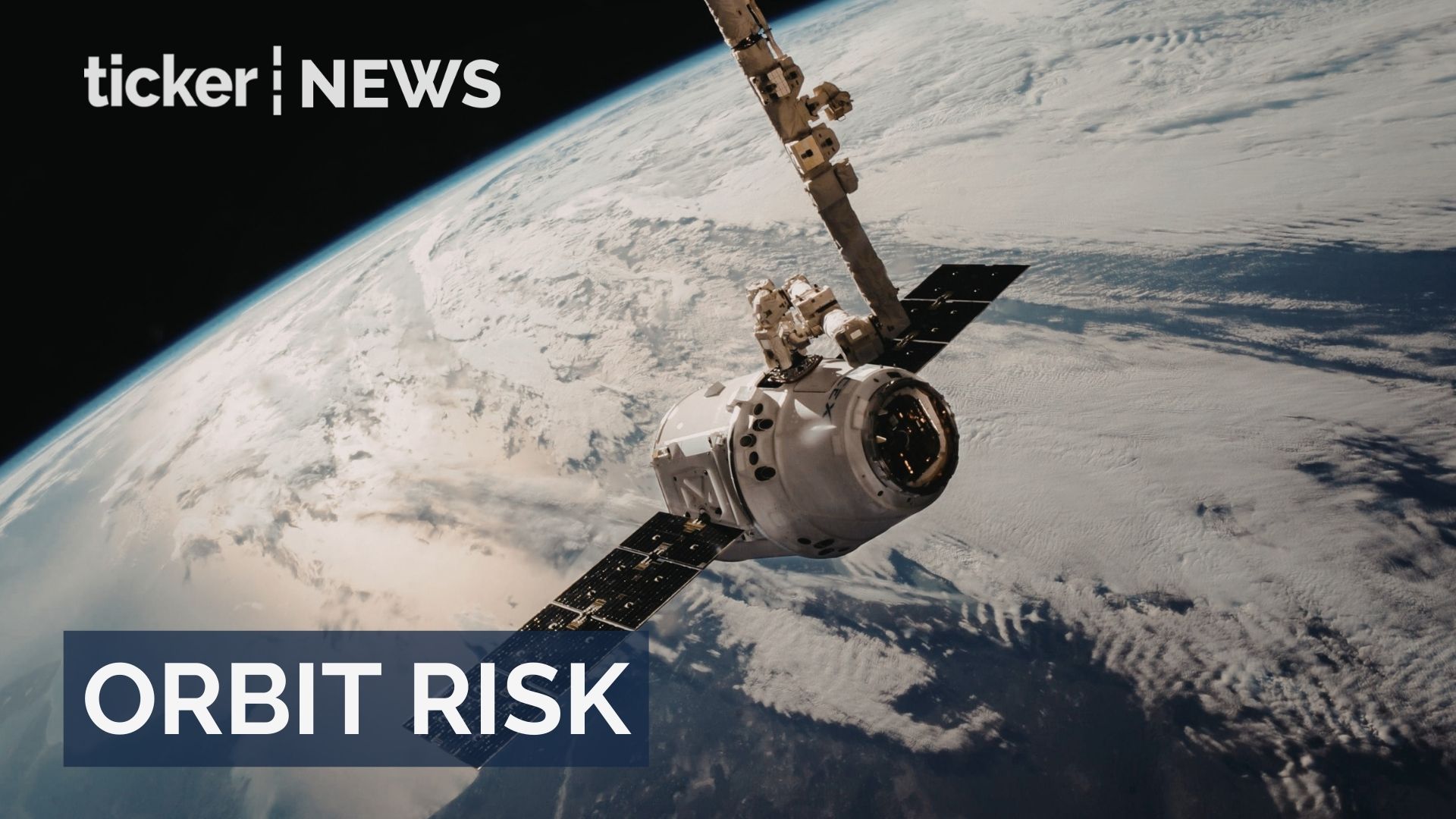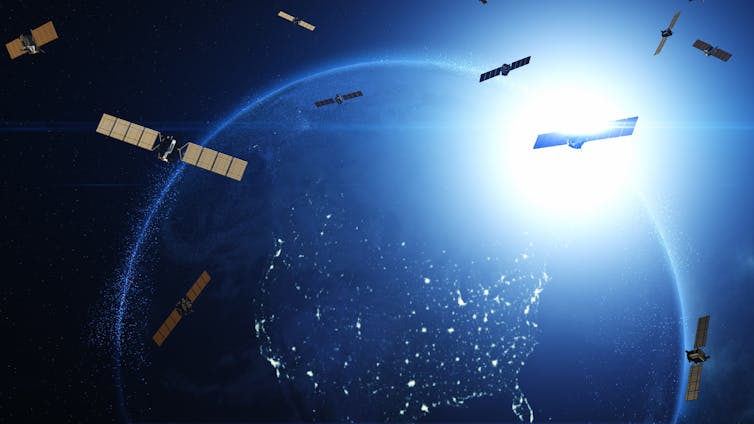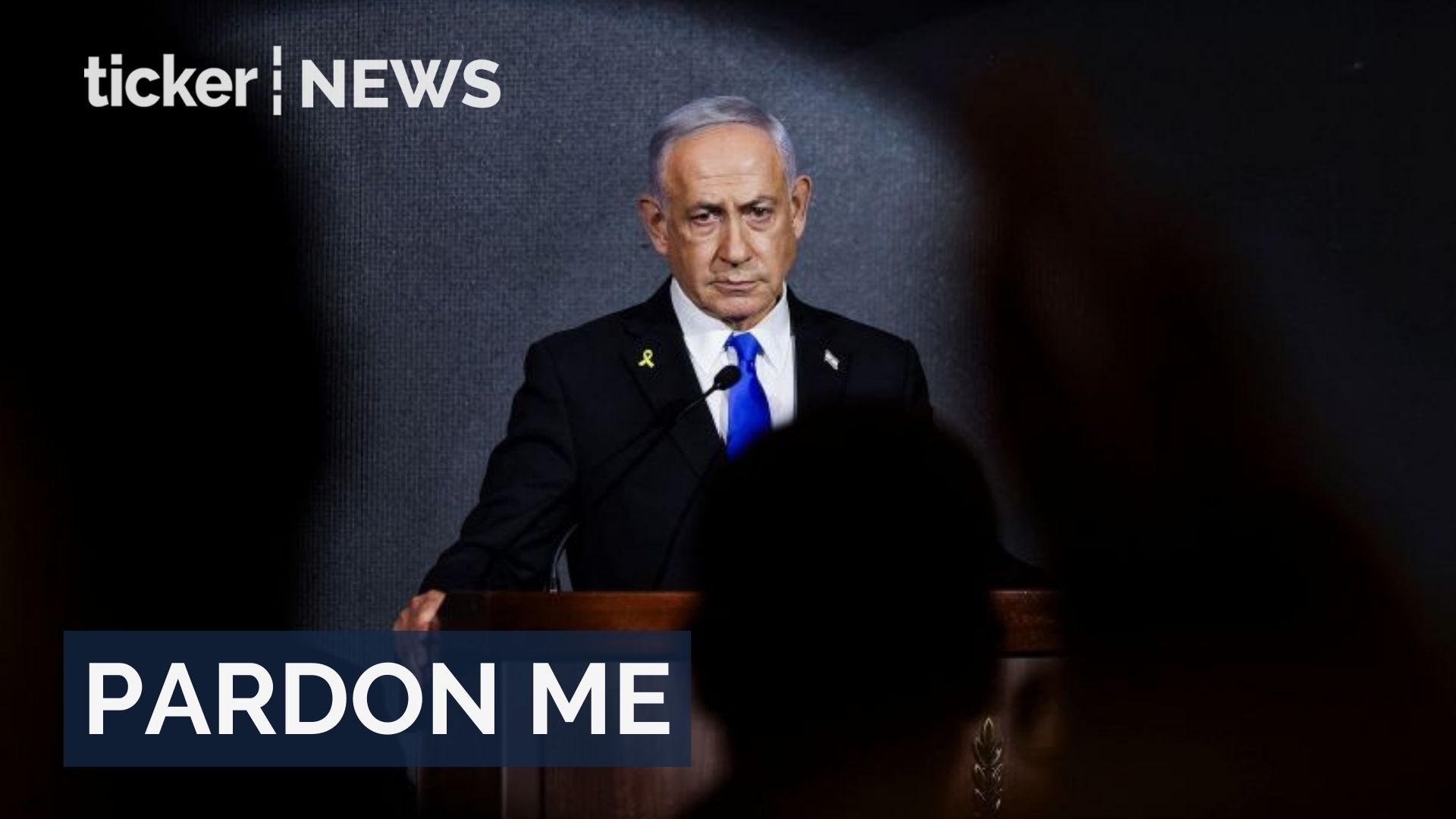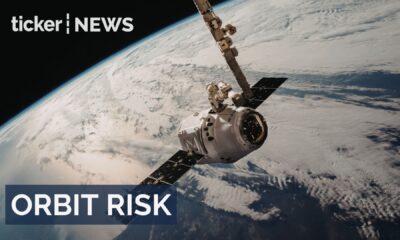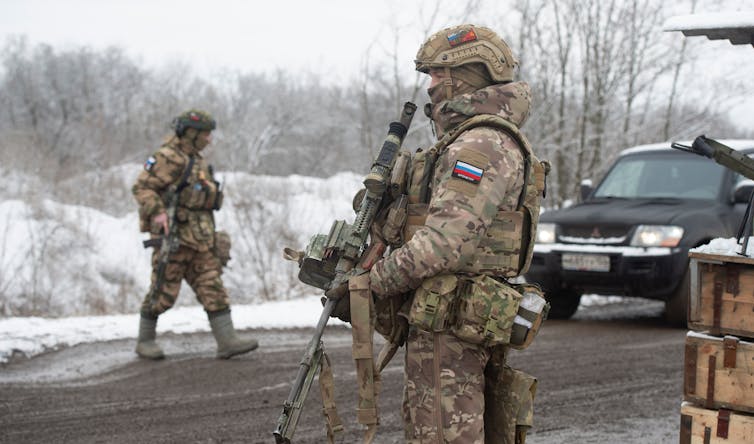

Sergey Nikonov/Shutterstock
Christo Atanasov Kostov, IE University
The scenes have become grimly familiar: Russian tanks rolling into Georgia in 2008, the seizure of Crimea in 2014, the invasion of Ukraine in 2022, Russian military jets violating European airspace, and now mysterious drone sightings closing airports across Europe.
While these may seem like disconnected events, in reality they are but chapters in a singular, focused and evolving strategy. Russia’s aim is to wield military power when necessary, engage in “grey-zone” war tactics when possible, and exert political pressure everywhere. Moscow has been doing all this for decades, with one objective in mind: to redraw Europe’s security map without triggering direct war with Nato.
This goal is neither improvised nor ambiguous, and at its core, it is irredentist – it seeks to reverse Nato’s post-Cold War expansion, and reassert a Russian sphere of influence in Europe.
This singular focus was what governed Russia’s actions in the runup to its invasion of Ukraine. In December 2021, Moscow demanded that Nato bar Ukraine and Georgia from joining the alliance, and that Nato forces withdraw to their May 1997 positions, where they were before any former Soviet states in East Europe joined Nato.
This was not a diplomatic opening gambit to the February 2022 ground invasion, but an objective in and of itself. From the Kremlin’s perspective, Nato’s enlargement is both a humiliation and an existential threat, and must be curbed at all costs.
A toolkit of pressure
Russia’s actions can be variously interpreted as sabre-rattling, brinkmanship, or diplomatic pressure. In fact, all of these labels are accurate, but Russia uses them in conjunction to blur the typical lines between diplomacy, military action and domestic propaganda. We can break Moscow’s “toolkit” of pressure down into different types of action.
- Brinkmanship to force dialogue: Military escalation, from troop build-ups to the invasion of Ukraine itself, creates crises that compel Western attention. Russia manufactures emergencies to earn negotiation leverage, as it successfully did during the Cold War, and more recently in Georgia in 2008 and in Ukraine from 2014 onwards.
- Grey-zone probing: Drone and jet incursions over Germany, Estonia, Denmark and Norway are deliberate tests of Nato’s detection and response capacity. They also serve more the practical purpose of collecting intelligence on radar coverage and readiness without crossing into open hostilities.
- Hybrid pressure on smaller Nato allies: Cyberattacks and energy disruptions in various EU member states are designed to test the alliance’s solidarity. Moscow singles out smaller, weaker states to foster resentment and doubt within Nato.
- Domestic theatre: For Putin, confronting the West plays well at home. As Dmitry Medvedev, the Deputy Chairman of the Security Council of Russia, recently claimed, “Europe fears its own war”. For the Kremlin, that fear reinforces the narrative that Russia is the assertive power, and that the West is indecisive.
Russia’s use of these tools is not new – it builds on strategies that have been refined since the Soviet collapse. From Transnistria to Abkhazia, South Ossetia, and Donbas, Moscow sustains “unresolved” wars that lock states out of Nato and the EU, preserving Russian influence indefinitely.
Russia’s ‘permanent test’
Today, the Kremlin’s strategy increasingly favours hybrid means – drones, cyberattacks, disinformation, and energy blackmail – over warfare. These are not random provocations, but a coherent campaign of testing.
Each incursion and attack serves a diagnostic purpose: Can Europe detect? Can it coordinate a joint response? Can it enact this response swiftly and efficiently?
As Belgian officials admitted after a recent spate of drone sightings, the continent needs to “act faster” in building air-defence systems. Every such admission emboldens Moscow’s conviction that Europe is unprepared and divided.
Back home, these moments are curated into propaganda clips for state television, where pundits mock European “weakness” and frame the continent’s disarray as validation for the Kremlin’s confrontational stance. This manufactured crisis, in turn, is the latest application of a well-honed strategy.
With regard to the West, the aim is exhaustion, not conquest – a “permanent test” designed to drain resources and unity through constant, low-level pressure.
What comes next?
Russia’s escalating provocations of Nato and Europe cannot be maintained as status quo. As things stand, there are three possible scenarios for where they could lead us:
- A new, long-term confrontation: This is the most likely outcome, as Nato cannot concede to Russia’s core demands without undermining its founding principles. Conflict would probably take the form of a drawn-out standoff: more troops on the alliance’s eastern flank, swelling defence budgets, and a new Iron Curtain across Europe.
- The “Finlandisation” of Ukraine: One possible, though unstable, outcome could see Ukraine coerced into a neutral status – foreswearing Nato membership in exchange for guarantees as Finland did during the Cold War. From the West’s perspective, this would reward Moscow’s aggression, and entrench its veto over neighbours’ sovereignty.
- Escalation through miscalculation: In a landscape of heightened tension, even a minor incident – a drone shootdown, a cyberattack gone wrong – could spiral into wider confrontation. A deliberate war between Nato and Russia is still improbable, but no longer unthinkable.
Europe’s imperative: resilience
The Kremlin’s approach relies on fragmentation; Europe’s answer must be cohesion. This means building up certain capabilities:
- Integrated air and missile defence: Build a truly continental shield, closing gaps that drones and hypersonic systems could exploit.
- Collective hybrid defence: Treat cyberattacks or drone incursions as alliance-wide challenges. A single, pre-agreed Nato response mechanism would deny Moscow the ability to isolate members.
- Technological and political autonomy: Invest in European defence industries, renewable energy independence, and resilient supply chains. Security now begins with self-sufficiency, especially in the face of wavering support from the US.
- Deterrence through diplomacy: Europe must combine credible military deterrence with pragmatic engagement, ensuring that channels of communication remain open to prevent escalation.
Russia’s strategy is not reactive, it is structural. The Kremlin seeks to force the West to accept a redrawn security order through a blend of coercion, probing, and perpetual testing. The tools may vary – from tanks to drones, from overt invasion to a hybrid war of attrition – but the aim endures: to undermine European unity and restore the sphere of influence lost by Russia in 1991.
Europe’s challenge is equally clear. It has to resist the fatigue of endless crisis and demonstrate that resilience, not fear, defines the continent’s future.
Moscow’s provocations will continue until the costs become prohibitive. Only a unified, prepared Europe can make that happen.
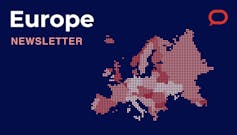

A weekly e-mail in English featuring expertise from scholars and researchers. It provides an introduction to the diversity of research coming out of the continent and considers some of the key issues facing European countries. Get the newsletter!![]()
![]()
Christo Atanasov Kostov, International Relations, Cold War, nationalism, Russian propaganda, IE University
This article is republished from The Conversation under a Creative Commons license. Read the original article.


